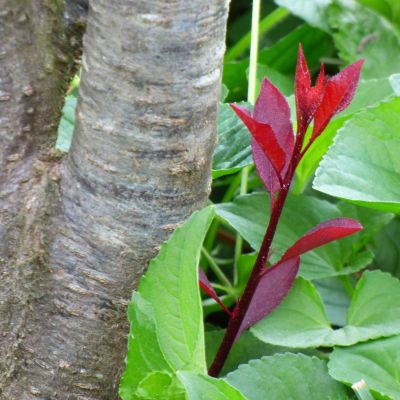What is a Plant Sucker?
You’re probably thinking, “What is a plant sucker?” Essentially, a plant sucker is an effort by the tree to grow more branches, especially if the tree is under stress, but you have taken perfect care of your plant and it wasn’t under any stress. Besides, that does not explain why your tree has suddenly switched varieties. Chances are, your tree is actually two trees spliced or grafted together. With many ornamental or fruiting trees, the desirable tree, for instance a key lime, is grafted onto the rootstock of an inferior but hardier related variety. The top of the tree is perfectly happy, but the lower half of the tree is under a certain amount of stress and biologically will try to reproduce itself. It does this by growing suckers from the root or lower stem. Tree suckers can also grow on non-grafted trees, but are most common on grafted ones. This explains what is a plant sucker.
Tree Sucker Control
It is better to try to prevent a tree sucker rather than having to deal with tree sucker removal. Here are some tips to help with tree sucker control:
Keep plants in good health. Many times, the rootstock on a tree will start to grow plant suckers when the additional stresses, like drought, overwatering, disease or pests, threaten the tree. Don’t over prune. Over pruning can stimulate the growth of tree suckers. To prevent a tree sucker, try not to cut into growth that is more than a few years old, if possible. Prune regularly. While over pruning can cause plant suckers, regular healthy pruning can help with tree sucker control.
Tree sucker – Remove or Let Grow?
While you might be tempted to leave a tree sucker, remove them as quickly as possible. A tree sucker will sap the energy away from the healthier and more desirable branches on top. Chances are, you will not be pleased by the plant produced by the tree sucker. Remove them to improve the health of the plant overall.
Tree Sucker Removal
Tree sucker removal is easy to do. Tree sucker removal is done in the same way pruning is performed. Using a sharp, clean pair of pruning shears, cleanly cut the plant sucker as close to the tree as possible, but leave the collar (where the tree sucker meets the tree) to help speed the wound recovery. Perform this tree sucker control as soon as you see any plant suckers appear so that you put less stress on your tree.
